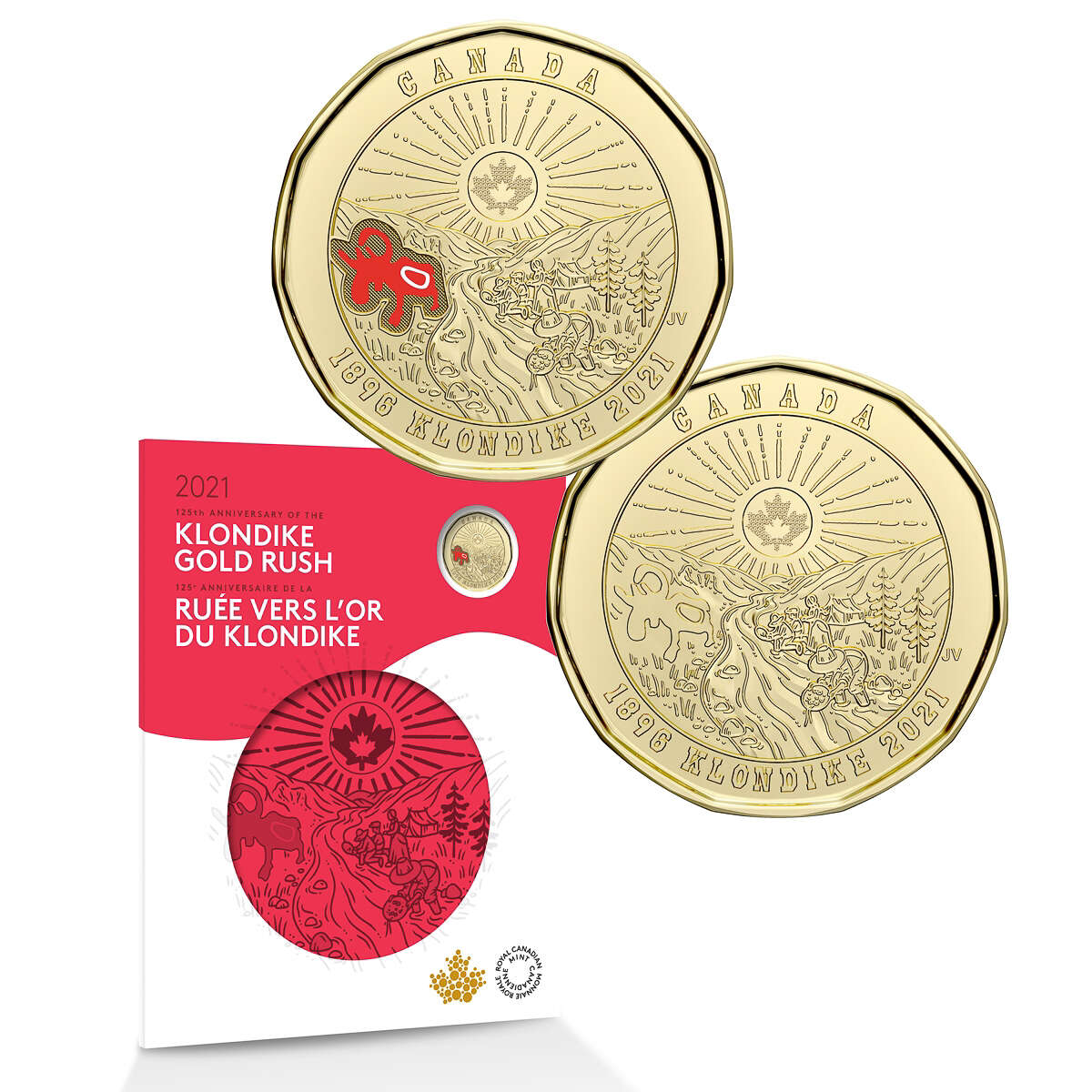Description
This seven coin set makes the perfect 2021 dated Canadian gift or collectible which also tells the story behind the coins. The set includes high quality numismatic uncirculated examples of all the denominations in circulation from the 5 cent coin to $2. The highlight of the set is two different versions of the $1 commemorative Klondike gold rush, one with a classic finish and one with a red and white coloured element. The coins are presented in an attractive full colour presentation folder.
The special issue $1 coins take us back in time to mark the 125th anniversary of the Klondike Gold Rush. Following the first discovery of gold on August 16, 1896, a stampede of close to 100,000 prospectors made the arduous trip to northwestern Canada’s Yukon Territory. At the confluence of the Klondike and Yukon rivers, Dawson grew from a few hundred people in 1896 to about 30,000 by the summer of 1898. This Gold Rush coin combines the excitement of prospecting with recognition of the lasting impact the gold rush had on the native peoples of the area.
The special issue $1 coins take us back in time to mark the 125th anniversary of the Klondike Gold Rush. Following the first discovery of gold on August 16, 1896, a stampede of close to 100,000 prospectors made the arduous trip to northwestern Canada’s Yukon Territory. At the confluence of the Klondike and Yukon rivers, Dawson grew from a few hundred people in 1896 to about 30,000 by the summer of 1898. This Gold Rush coin combines the excitement of prospecting with recognition of the lasting impact the gold rush had on the native peoples of the area.
The Design:
The design features the native Canadian artist’s rendition of the gold discovery that set off the Klondike Gold Rush. Under the shining sun, the original four prospectors can be seen panning for gold at the edge of Rabbit Creek, a small tributary of the Klondike River. It was soon renamed Bonanza Creek, a name that became world famous. The pictorial symbol for Moosehide Slide appears on the opposite side of the creek, with one of the coins featuring this symbol in colour. For the Tr’ondëk Hwëch’in native peoples, this natural land feature signified the arrival to their fishing grounds and a coming together of families following winter travels, while for gold seekers it signified their arrival into the Klondike. Today it signifies a connection to place for all residents of the region.
The Klondike Gold Rush:
Gold was discovered in mid-August 1896 by George Carmack, an American prospector, Keish (aka Skookum Jim Mason), Káa Goox (aka Dawson Charlie), and Shaaw Tlàa (Kate Carmack) — Tagish First Nation members into whose family Carmack had married. When word of the discovery reached the outside world in July 1897, it sparked an unprecedented influx of prospectors. Tens of thousands of would-be prospectors left their homes all over the world, though mainly from the United States, and headed for the Klondike.
The Klondike Gold Rush:
Gold was discovered in mid-August 1896 by George Carmack, an American prospector, Keish (aka Skookum Jim Mason), Káa Goox (aka Dawson Charlie), and Shaaw Tlàa (Kate Carmack) — Tagish First Nation members into whose family Carmack had married. When word of the discovery reached the outside world in July 1897, it sparked an unprecedented influx of prospectors. Tens of thousands of would-be prospectors left their homes all over the world, though mainly from the United States, and headed for the Klondike.












